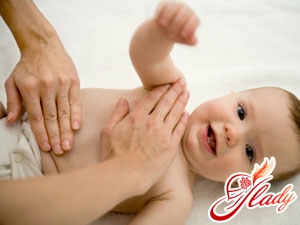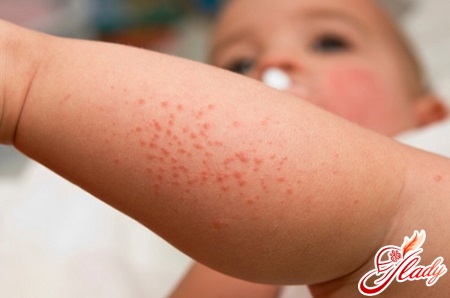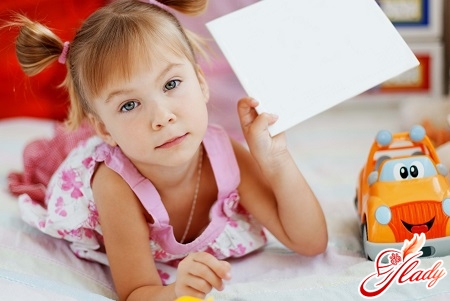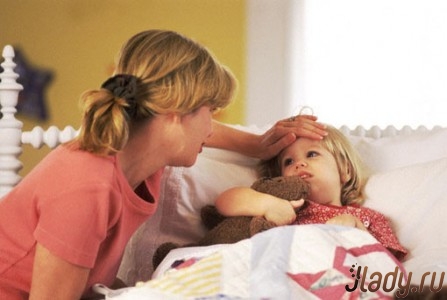 Inguinal, umbilical hernia in children, treatment - theseterms are familiar to many parents. Quite often, parents of small and not so small children hear from a pediatric surgeon that their child has a hernia. Of course, parents get scared and upset when they learn about this. Their imagination draws the most terrible pictures. But is it worth panicking so much? Of course, there is nothing good in this disease, as in any other. However, the presence of a hernia in a child is not a reason for panic and despair. Modern medicine quickly and effectively copes with the most severe forms of hernia, and very soon your baby will forget that something was bothering him. Hernia in children under one year is eliminated almost without a trace. First, you need to know what a hernia is. In essence, a hernia is a protrusion through the peritoneal wall under the skin of various internal organs, most often the intestines. The main symptoms of a hernia in a child are swelling at the site of the protrusion and discomfort when touching this place. Boys most often have inguinal hernias, and girls - umbilical. However, the opposite can also happen. There are different types of hernias, but they all have similar signs. Below are more detailed descriptions of the main types of hernias:
Inguinal, umbilical hernia in children, treatment - theseterms are familiar to many parents. Quite often, parents of small and not so small children hear from a pediatric surgeon that their child has a hernia. Of course, parents get scared and upset when they learn about this. Their imagination draws the most terrible pictures. But is it worth panicking so much? Of course, there is nothing good in this disease, as in any other. However, the presence of a hernia in a child is not a reason for panic and despair. Modern medicine quickly and effectively copes with the most severe forms of hernia, and very soon your baby will forget that something was bothering him. Hernia in children under one year is eliminated almost without a trace. First, you need to know what a hernia is. In essence, a hernia is a protrusion through the peritoneal wall under the skin of various internal organs, most often the intestines. The main symptoms of a hernia in a child are swelling at the site of the protrusion and discomfort when touching this place. Boys most often have inguinal hernias, and girls - umbilical. However, the opposite can also happen. There are different types of hernias, but they all have similar signs. Below are more detailed descriptions of the main types of hernias:
Abdominal hernias
All abdominal hernias are called abdominal,which is the protrusion of internal organs through the abdominal wall. This type of hernia is the most common - according to statistics, every 10th child in Russia suffers from this disease. This article will discuss the most common hernia in children:
- Umbilical hernia
There is a huge amount of noise around the umbilical hernia in childrena wide variety of rumors and speculations, both true and deeply erroneous. Some people firmly believe that an umbilical hernia can be eliminated by applying coins, conspiracies, while others are supporters of radical methods such as surgical intervention. The purpose of this material is to help parents understand the disease and make the only right decision. Most often, an umbilical hernia occurs in newborn babies during the first few months. Parents should closely monitor the condition of the baby's tummy immediately after the umbilical cord stump falls off - it is at this time that a protrusion appears in the navel area, which is quite easily pushed back inward without surgical intervention if it was noticed in time. The size of the hernia depends entirely on the size of the baby's umbilical ring. Doctors call the muscle that wraps around the baby's navel the umbilical ring. After the baby is born, the umbilical cord is cut and this ring contracts, because the baby no longer needs the umbilical cord. In the case when any internal organ gets caught in the grip of this ring, we can talk about an umbilical hernia. The severity of the disease 100% depends on the size of the hernia. If the hernia is small, it can manifest itself only when the baby cries or shows other anxiety - grunts, strains the muscles of the abdomen. An experienced doctor - a pediatrician can clearly determine the size of the umbilical ring and its boundaries. To do this, he palpates the tummy in the navel area, which also allows, in addition to the size of the umbilical ring, to determine the location of the edge of the hernial orifice. The area surrounding the protrusion of the hernia is called the edge of the hernial orifice. In the case when the size of the umbilical ring of the baby is large enough, and accordingly, the size of the hernia is also considerable, its manifestations are somewhat different. The swelling is constantly visible, the child shows anxiety. And when the child is tense, the hernia takes on a rather terrible appearance, significantly protruding and swelling. As a rule, a pediatrician notices the presence of a hernia in the baby in the first weeks during preventive examinations. However, parents should also be especially attentive, since if the hernia is small and the child does not show the slightest signs of anxiety during the examination, the doctor may not notice the problem. Parents, who monitor their baby around the clock, have much more opportunities to notice the problem. Umbilical hernia in children has quite specific symptoms and it is difficult to confuse them with something else. Even people without medical education can easily distinguish the signs of an umbilical hernia in children. Timely diagnosis is extremely important, since an umbilical hernia has one unpleasant tendency - to increase over time. Therefore, the earlier the disease is detected, the more successful the treatment will be and the faster the hernia can be eliminated, causing the baby as little inconvenience as possible. Parents whose children suffer from umbilical hernia are always concerned about what causes umbilical hernia. Below is what we are talking about:
- Hereditary factor
The most common cause of umbilical cordhernias is a genetic predisposition of the baby to weak muscles of the anterior abdominal wall. If the mother or father had an umbilical hernia in childhood, their babies are more susceptible to the risk of developing this complication in about 70% of cases. However, sometimes this rule may not work.
- Anatomy of muscle weakness
It is often common among parentsa misconception that an umbilical hernia in children can be caused by an incorrectly cut umbilical cord. But in fact, the size of the umbilical ring does not depend on how exactly the umbilical cord was cut and how the umbilical staple was applied. An umbilical hernia occurs if the child has anatomical weakness of the muscles near the umbilical ring. As a rule, with an umbilical hernia, most often, there is an infringement of intestinal loops. The protrusion of the hernia is very easily removed inward with the slightest pressure on it. And if the umbilical ring is very large, you can observe the work of the intestines with the naked eye - all its peristalsis is visible: muscle contraction and movement of food through it. Of course, many parents, seeing this whole picture, are very scared. Of course, this sight is not for the faint of heart, but believe me - it does not cause any anxiety or inconvenience to the baby. As mentioned above, most often the diagnosis of "umbilical hernia" is made for the first time by a pediatrician. However, the baby must also receive a consultation with a pediatric surgeon, who will decide what further treatment will be - conservative or whether surgery will be needed. Also, it is the surgeon who should give parents recommendations on caring for children with an umbilical hernia. As a rule, a surgeon very rarely decides on the need for surgical intervention in the body of a small child. The peculiarity of the child's body is such that umbilical hernias in babies are largely prone to self-healing. Doctors often observe the healing of umbilical hernias with large sizes, both of the umbilical ring and the protrusion of the hernia itself. Many parents, having heard various horror stories, are panicky afraid of strangulation of the umbilical hernia. However, as practice shows and doctors say, strangulation of the umbilical hernia is so extremely rare that this threat can be ignored. But, nevertheless, the same pediatricians admit the fact that children suffering from umbilical hernias are much more restless than their healthy peers. And, in addition, such children are extremely weather-dependent - they react very strongly to all changes in the weather. Parents should know that the presence of an umbilical hernia does not in any way cause any pain to the baby. However, nevertheless, the baby still experiences some discomfort. It is caused by the fact that the presence of an umbilical hernia often leads to frequent bloating in the baby's tummy. This is what causes the baby's anxiety.
Treatment of umbilical hernia
This has already been mentioned above. Что пупочные грыжи у маленьких детишек очень часто излечиваются абсолютно самостоятельно, без какого – либо вмешательства извне. Однако все же врачи рекомендуют принять ряд мер для активизации процесса излечения пупочной грыжи. Правильное лечение позволяет в полной мере ликвидировать даже большую пупочную грыжу уже через 6 месяцев. Для детишек, которые страдают от пупочной грыжи, крайне полезно будет выкладывание на животик. Подобная мера актуальна как во время лечения уже существующей пупочной грыжи, так и для профилактики ее возникновения. Эта простая мера в состоянии в значительной степени облегчить состояние крохи. Врачи – хирурги рекомендуют родителям класть кроху на животик примерно за 15 – 20 минут перед кормлением, как минимум 3 – 4 раза в сутки. Не стоит выкладывать кроху на животик на кроватке или диване. Наиболее оптимально для этих целей подходит любая ровная и, главное, твердая поверхность – например, стол. Покрытый пеленкой либо же пеленальный столик. Проводя эту процедуру, ни в коем случае не забывайте об элементарной технике безопасности – ни на минуту не оставляйте кроху одного, даже в том случае. Если он еще совсем маленький и совершенно не умеет самостоятельно переворачиваться. Детские врачи – травматологи могут рассказать не один десяток историй о своих маленьких пациентах, которые. Не умея еще поворачиваться, каким – то непостижимым образом оказывались на полу, стоило их маме на мгновение отвернуться. В то время, когда малыш лежит на животике, нелишним станет проведение легкого массажа ручек, ножек и спинки. Не стоит прилагать особые усилия, просто легонько поглаживайте кроху по ручкам и ножкам, слегка нажимая на них. Продолжительность массажа должна совпадать с продолжительностью выкладывания малыша на животик. Как правило, подобная процедура очень нравиться практически всем деткам без исключения. Следующим по популярности и эффективности методом лечения, а также профилактики пупочной грыжи у малышей является массаж животика крохи. Несмотря на то, что в детской поликлинике массаж, проводимый по назначению врача хирурга или педиатра, проводится только после того, как малышу исполнится два месяца, в домашних условиях родители могут начинать проводить массаж гораздо раньше. В принципе, его можно начинать делать сразу же после того, как у малыша полностью заживет пупочная ранка. Делая массаж самым маленьким крохам, родители должны соблюдать предельную аккуратность и осторожность – недопустимо прикладывать усилия и давить крохе на животик. Таким крохам вполне достаточно легких поглаживаний животика по часовой стрелке, начиная от нижней левой части живота, по направлению к правой. Это стимулирует определенным образом мышцы, поэтому очень важно соблюдать именно эту последовательность и направление. Поглаживания не стоит проводить только пальцами – гораздо эффективнее использовать для этой цели всю внутреннюю поверхность ладони. Малышам постарше очень полезен массаж, получивший у медиков шуточное название «I love U». Проводится он следующим образом – после выкладывания крохи на животик мысленно представьте себе нарисованную у него на животике большую букву U. Именно так на самом деле и выглядит кишечник крохи. Обильно смажьте кожу животика и свои пальцы для лучшего скольжения детским кремом или маслом. После этого с нажимом, но очень аккуратно начинайте массаж животика. Сначала нарисуйте с левой стороны животика малыша букву «I» сверху вниз два – три раза. Подобное движение помогает переместить газы, имеющиеся в кишечнике крохи, вниз, за пределы ободочной кишки. После этого продолжайте рисовать букву «L» для того, чтобы продвинуть газики вдоль поперечного участку ободной кишки. Повторяйте это действие как минимум три раза. После этого несколько раз нарисуйте на пузике крохи букву «U» для вывода газов из кишечника. После этого начинайте рисовать всевозможные окружности вокруг пупочного кольца крохи. Этому действию необходимо уделить достаточное количество сил и внимания. Ведь, как уже неоднократно говорилось выше, именно из-за слабости и недостаточного развития мышц передней брюшной стенки и возникает формирование слишком широкого пупочного кольца и, как следствие, формирование пупочной грыжи. Наиболее важно укреплять прямые мышцы живота крохи. Прямыми называются те мышцы, которые расположены по обе стороны от пупочного кольца и закрывают собой практически полностью всю брюшную стенку малыша. Укреплять эти мышцы массажисты рекомендуют следующим образом. Большой и средний пальцы необходимо расположит на расстоянии одного сантиметра по правую и левую сторону от пупочного кольца ребенка. Пальцами очень аккуратно, не доставляя малышу дискомфорта, необходимо произвести десять нажатий, после чего просто погладить животик малыша и снова повторить нажатия. Всего за один раз необходимо сделать около пяти подобных циклов. Если массаж проводится не с целью профилактики, а с целью лечения уже существующей у крохи грыжи, в завершение массажа необходимо несколько раз вдавить выпячивание пупочной грыжи в животик малыша. Как уже говорилось выше, проводить массаж необходимо каждый раз после выкладывания малыша на животик, однако его можно проводить и немного чаще, если массаж нравится малышу. Во время массажа старайтесь соблюдать несколько простых и несложных правил:
- Be sure to shorten the nails shortly before the massage and remove all ornaments, in order to avoid traumatizing the skin crumbs.
- Make sure that your hands before the massage are clean, dry and warm.
- During the laying of crumbs on the tummy and massage, you must ensure that the temperature in the room was not lower than 22 degrees, otherwise the kid can be capricious and even catch cold.
- All the time, while you are doing the baby massage,closely monitor the reaction of the baby - at the first signs of displeasure, try to change the rhythm of massage movements, intensity of effort. If this measure does not bring any result, and the child will continue to be capricious, the massage should be stopped until the next time.
- In no case should you massage the baby in the event that there are even the slightest signs of any kind of malaise.
Another effective method of conservativeлечения детской пупочной грыжи – это наложение повязки из лейкопластыря. Однако родители должны иметь ввиду, что подобное лечение возможно только с разрешения лечащего врача. Именно он должен показать, каким образом следует накладывать данную повязку. Однако чаще всего врач предпочитает самостоятельно накладывать лечебную повязку. И, по большему счету, это крайне разумное решение – ведь неправильно наложенная повязка может только ухудшить состояние ребенка. Для лечения пупочной грыжи используются различные специально для этих целей предназначенные пластыри, которые можно купить либо в аптеке, либо в детском магазине. Прежде чем покупать подобные лейкопластыри, предварительно уточните у врача, какой именно вид лейкопластыря предпочтительнее использовать в вашем конкретном случае. Врач вправит выпячивание грыжи внутрь, а прямые мышцы брюшной стенки соединит прямо над пупочным кольцом, в виде двух складок, которые фиксируются лейкопластырем. Повязка остается у крохи на десять суток, после чего снимается врачом. Врач оценивает состояние пупочной грыжи – сомкнулось ли пупочное кольцо. В том случае, если оно не сомкнулось, повязку накладывают еще на десять дней. Как правило, после трехкратного курса наложения повязки на 10 дней. Некоторые хирурги предпочитают накладывать лейкопластыри не вокруг животика крохи, а непосредственно на околопупочную область на две – три недели, не формируя складку. Пластырь надо менять каждые несколько дней, не снимая повязку во время купания. При данном методе накладывания лейкопластыря родители могут самостоятельно, не прибегая к помощи хирурга. В том случае, если вы решили прибегнуть к данному методу лечения, вам необходимо приобрести гипоаллергенный пластырь. Применение обыкновенного пластыря зачастую вызывает сильное раздражение кожи у крохи. В том же случае, если все вышеописанные консервативные методы лечения оказались неэффективными, а пупочная грыжа сохраняется у ребенка и после одного года, педиатр и хирург принимают решение о целесообразности проведения хирургического вмешательства для устранения пупочной грыжи. В том случае, если подобное решение касается вашего малыша, не стоит пугаться и отказываться от этого – операция по удалению пупочной грыжи крайне проста и очень хорошо отработана. Во время операции хирурги не затрагивают никаких внутренних органов крохи, только мышечный слой и кожу. Если показание для вмешательства — пупочная грыжа у детей, операция не представляет никакой угрозы для здоровья малыша. Рассказывая о методах лечения пупочной грыжи, нельзя не упомянуть о так называемых народных методах лечения. Многие родители, узнав о том, что у их ребенка пупочная грыжа, бросаются к различным бабкам и народным целителям, слушая советы знакомых, накладывают на грыжу медные монетки и купают крох в различных травяных сборах. Некоторые подобные методы лечения не оказывают никакого эффекта, а некоторые – откровенно вредят здоровью крохи. Заговор грыжи у детей – пустая трата времени и денег. Грыжа у грудного ребенка должна лечиться только у врачей. Намного разумнее не рисковать здоровьем ребенка и ставить на нем различные эксперименты, а сразу после того, как проблема обнаружилась, обратиться за помощью к квалифицированному врачу. Врач адекватно оценит состояние ребенка и окажет помощь, не ставя под угрозу его здоровье — детская пупочная грыжа легко диагностируется и поддается лечению.
Prevention of disease
As you know, any disease is easierprevent than treat. Umbilical hernia is not an exception to the rule. Proper prevention significantly reduces the risk of developing an umbilical hernia in a baby. Below are the main measures for preventing umbilical hernia:
- Prevention of strain on the child
One of the main preventive measures will beavoiding situations where the baby is forced to push. Such situations arise as a result of bloating in the baby, which usually occurs due to increased gas formation or constipation. In order to avoid constipation, it is best to breastfeed the baby, not formula, if the mother's health allows. However, the mother should remember that she also needs to strictly follow a diet, excluding from it absolutely all products that can in any way provoke increased gas formation. A nursing mother, in order not to provoke such a phenomenon as an umbilical hernia in children, should not eat:
- Cow's milk. The exception is dairy products.
- All kinds of nuts.
- All kinds of legumes.
- Sausages, sausages. Smoked meat.
If the mother herself is prone to constipation, doctors adviseShe should eat a little dried apricots or prunes. However, you shouldn't overuse them either, to avoid allergic reactions in the baby.
Inguinal hernia
Next in frequency of occurrence afterumbilical - inguinal hernia. However, unlike an umbilical hernia, an inguinal hernia much more often leads to the occurrence of strangulation. Any inguinal hernia in a child is nothing more than a congenital pathology that occurs as a result of the fact that the child either has a weak abdominal wall or the vaginal process of the peritoneum is underdeveloped. An inguinal scrotal hernia in children is one of the varieties of inguinal hernia. It occurs only in boys, since with this form of the disease the hernia descends into the cavity of the scrotum. The course of the disease and treatment are exactly the same as with a regular inguinal hernia. However, despite the fact that the pathology is congenital, the manifestations of an inguinal hernia often do not occur immediately after the birth of the child, but after several months or even years. This reason is one of the leading reasons for the need for regular visits to a pediatric surgeon in the first few years of a child's life. Parents should never ignore them. Inguinal hernia in children has the following symptoms:
- The most inguinal hernia manifests itself in the physical load of the child - coughing, crying.
- In the groin area, most often on the right side, a swelling is visualized, the size of which can vary from hazelnut to mandarin.
- When you click on this tumor, it effortlessly goes inside, while the action is accompanied by a gurgling sound.
Inguinal hernia in young children is most commonIt turns out to be oblique, and right-sided. Although, unfortunately, bilateral hernia is also very common. As pediatricians have noted, the incidence of inguinal hernia in boys is much higher than in girls. Most often, it is possible to detect the presence of a hernia, provided that the surgeon is visited regularly and in a timely manner, before the child reaches two or three years of age. Parents should not hope that they will be able to detect this disease on their own in any case. Inguinal hernia is much more difficult to diagnose in most cases than umbilical hernia. And parents notice the presence of a problem only when the hernia acquires quite impressive dimensions. And since inguinal hernia in children does not respond to treatment, it is necessary to operate on it as early as possible. Removal of inguinal hernia in children is quite quick and without health complications if the operation is done on time. Separately, it is worth talking about the contents of inguinal hernias. As a rule, in boys, the contents of the hernia most often turn out to be the intestines, while in girls, the ovary is in the hernia. Although sometimes in girls it is the intestines that are pinched. Inguinal hernia in children has a variety of causes and only a doctor can accurately determine them. If for some reason the operation cannot be performed (usually the child is ill), parents should closely monitor the child's health and know how to identify a hernia in a child if it is strangulated. If the hernia protrusion suddenly becomes hard to the touch, does not fit back into the abdominal cavity and causes severe pain in the baby, parents should take the child to the emergency room of the nearest hospital as soon as possible, or call an ambulance. An inguinal hernia in children is an indication for urgent hospitalization, since a strangulated inguinal hernia in children can become a real threat to life. In addition to the above symptoms, most children begin to vomit quite often and severely, feel very weak and even lose consciousness. In no case should parents try to feed or even give the child something to drink - otherwise there will be more problems with anesthesia during the upcoming surgical intervention.
Treatment of inguinal hernia
If in the case of an umbilical hernia it is still possibletalking about conservative, non-surgical treatment, then a child diagnosed with an inguinal hernia is shown immediate surgical intervention. If an inguinal hernia is in children, surgery is simply necessary. There are simply no other conservative ways to get rid of an inguinal hernia except surgery. Any delay in surgical intervention can result in quite serious complications for the child's health - as mentioned earlier, inguinal hernias tend to strangulate. And surgery for a strangulated hernia is much more difficult, takes more time and requires a long recovery than a planned one. In addition, the consequences can be the most dire, up to infertility in the future. Well, and there is no need to talk about the fact that strangulation of an inguinal hernia poses a fairly serious danger to the life of the baby. It is much wiser to promptly contact a pediatric surgeon and go to hospital for subsequent surgical intervention. The only case that can be an exception is an inguinal hernia in infants. But they should also have the operation done immediately after they turn 6 months old. Parents should not be afraid of the upcoming operation and panic. Inguinal hernia is extremely common, and all surgeons without exception have worked out the technique of performing this type of operation to the smallest detail. And the anesthesiologist will definitely select the most optimal and gentle type of anesthesia, based on the individual needs of your baby and the characteristics of his body.
Diaphragmatic hernia
There is also a diaphragmatic hernia in children.This type of hernia is one of the most severe congenital malformations, often incompatible with life. However, recently, with the development of modern medicine, such children more and more often not only survive, but also get the opportunity to lead a full life. The cause of diaphragmatic hernia is the pleuroperitoneal membrane that has not completely fused. As a result, the internal organs of the abdominal cavity (spleen, stomach, large and small intestines) are displaced into the chest. As a rule, a common complication in children with diaphragmatic hernia is pulmonary hypoplasia, as well as pulmonary hypertension. In the same case, if heart mass deficiency is added to all these problems, the prognosis significantly and sharply worsens. In any case, no matter what form of the disease the child has, the parents need to seek qualified medical help in a children's medical institution as soon as possible.









